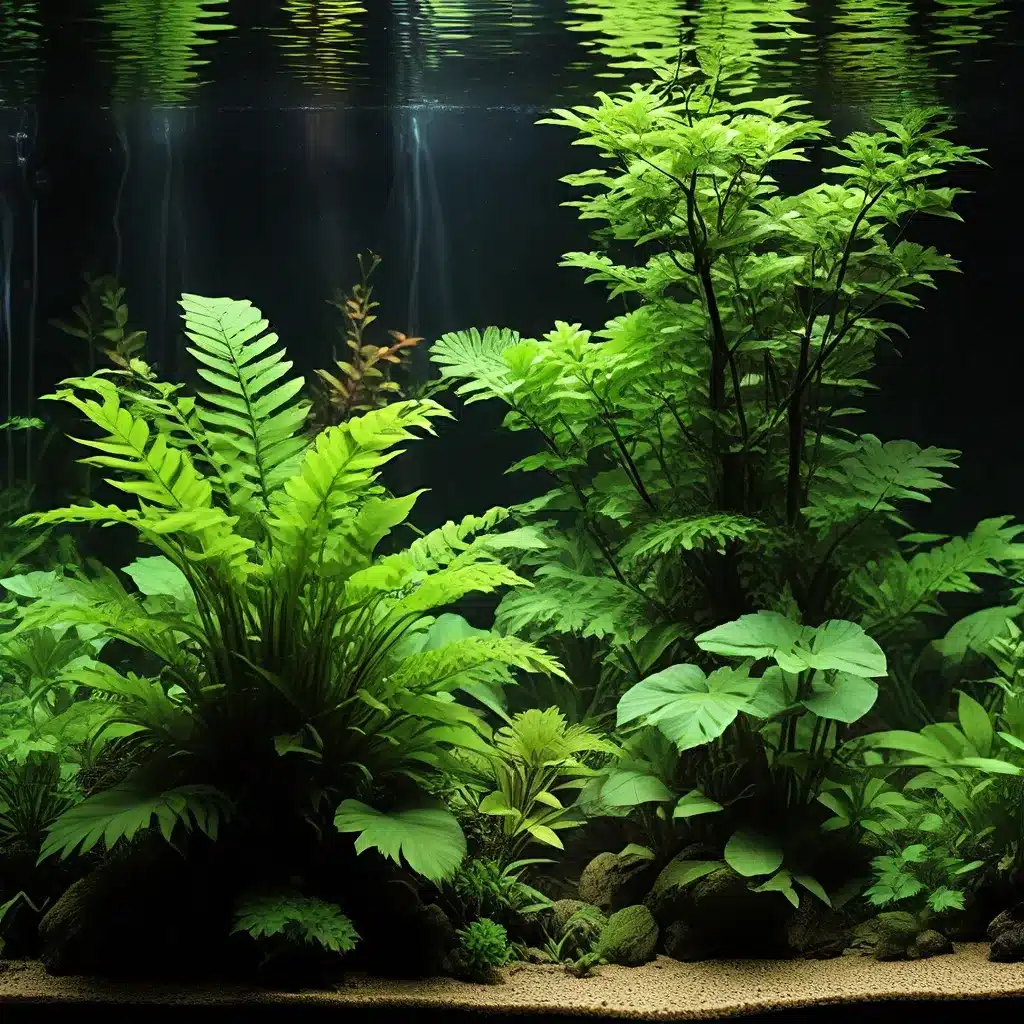
Unlocking the Power of Light for Aquatic Ecosystems
Aquarium enthusiasts know that lighting is a critical component in maintaining a thriving aquatic environment. The right lighting not only enhances the visual appeal of your aquarium but also directly impacts the health and growth of your aquatic plants. In this comprehensive guide, we’ll explore the intricacies of aquarium plant lighting optimization, unraveling the secrets to achieving the perfect spectrum for your underwater oasis.
Understanding the Importance of Full-Spectrum Light
Plants, whether terrestrial or aquatic, rely on light as the primary source of energy for photosynthesis. In the aquarium world, replicating the natural full-spectrum sunlight that plants would receive in their native habitats is essential for their optimal growth and development. King Aquarium understands the significance of this, and we’re here to share our expertise on how to create a lighting setup that mimics the sun’s natural wavelength distribution.
Exploring the Spectrum: From Ultraviolet to Infrared
Aquatic plants have specific light requirements that vary depending on the species, their native environments, and the aquarium’s overall ecosystem. The spectrum of light, ranging from ultraviolet (UV) to infrared (IR), plays a crucial role in plant growth, coloration, and overall health.
Ultraviolet Light (UV): While not essential for all aquatic plants, a trace amount of UV light can be beneficial for certain species. UV radiation can aid in the production of carotenoids, which contribute to the vibrant hues of some aquatic plants.
Visible Light: The visible spectrum, encompassing the wavelengths from 400 to 700 nanometers, is the most crucial component for photosynthesis. Different wavelengths within this range stimulate specific plant responses, such as chlorophyll production, stem elongation, and leaf development.
Infrared Light (IR): The infrared portion of the spectrum, while not directly involved in photosynthesis, can still contribute to plant growth and overall ecosystem balance. Infrared light helps regulate plant metabolism, root development, and thermal regulation within the aquarium.
Balancing the Spectrum: Achieving Optimal Plant Growth
Striking the right balance between the various light wavelengths is the key to cultivating a thriving aquarium. Aquarium lighting systems that offer a comprehensive spectrum, closely mimicking natural sunlight, are the most effective in promoting healthy, vibrant aquatic plants.
LED Technology: Advancements in LED lighting technology have revolutionized the aquarium industry, providing hobbyists with a wide range of options to create the perfect lighting setup. LED bulbs can be customized to emit specific wavelengths, allowing for a tailored spectrum that caters to the unique needs of your aquarium plants.
Fluorescent Lighting: Traditional fluorescent lighting has also evolved, with options like T5 and T8 fixtures offering improved color rendering and spectrum coverage. These lighting systems can be an affordable and effective solution for aquarium plant care.
Hybrid Lighting Setups: For the ultimate in light optimization, some aquarists combine LED and fluorescent lighting, leveraging the strengths of each technology to create a truly balanced and dynamic spectrum.
Implementing Lighting Strategies
Crafting the perfect lighting setup for your aquarium plants requires careful consideration of several factors, including tank size, plant species, and the desired aesthetic. King Aquarium recommends the following strategies to ensure optimal plant growth and vibrant aquascapes:
1. Lighting Duration: Provide your aquatic plants with the appropriate photoperiod, mimicking the natural day-night cycle. This typically involves 8-12 hours of high-intensity lighting followed by a gradual transition to lower-intensity lighting or a dim night mode.
2. Lighting Intensity: Adjust the light intensity based on the specific plant species and their light requirements. Higher-light plants may benefit from more intense lighting, while lower-light plants may thrive in a more moderate setting.
3. Spectrum Customization: Experiment with different lighting combinations and spectrums to find the perfect balance for your aquarium plants. Consider incorporating a mix of LED and fluorescent lights or even supplementing with specialty bulbs like plant-centric LEDs or full-spectrum T5 fixtures.
4. Vertical Lighting Placement: Strategically position your lighting fixtures to ensure even light distribution throughout the aquarium. This may involve using multiple light sources or adjusting the height of the fixtures to create a uniform lighting environment.
5. Monitoring and Adjustments: Regularly monitor the growth and health of your aquatic plants, making adjustments to the lighting setup as needed. Be prepared to experiment and fine-tune your approach to achieve the desired results.
Conclusion: Unlocking the Potential of Aquarium Lighting
Optimizing aquarium plant lighting is a dynamic and rewarding process that requires a deep understanding of light spectrums, plant physiology, and aquarium ecosystem dynamics. By mastering the art of light management, you can unlock the full potential of your aquatic oasis, cultivating a thriving, vibrant, and visually stunning underwater world.
At King Aquarium, we’re passionate about empowering aquarium enthusiasts with the knowledge and tools to create their dream aquariums. Whether you’re a seasoned hobbyist or just starting your aquatic journey, our comprehensive resources and expert guidance will help you navigate the complexities of aquarium plant lighting optimization and achieve aquascaping excellence.

